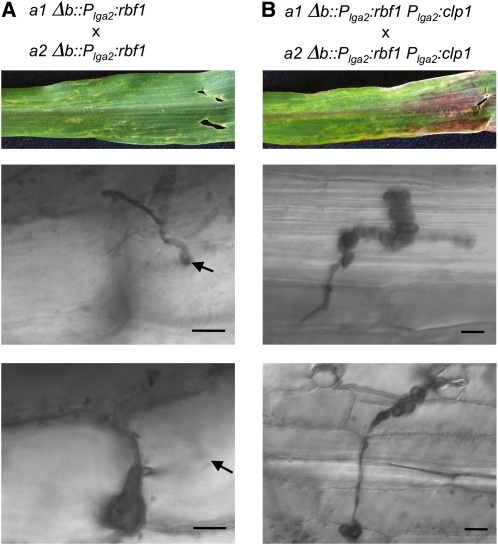Figure 6.
Ectopic Expression of rbf1 and clp1 Is Sufficient for the Initial Steps of Pathogenic Development.
Mixtures of strains UKH184 (a1 Δb::Plga2:rbf1) and UKH186 (a2 Δb::Plga2:rbf1) (A) or UKH178 (a1 Δb::Plga2:rbf1; Plga2:clp1) and UKH180 (a2 Δb::Plga2:rbf1; Plga2:clp1) (B) were coinoculated into 7-d-old maize seedlings. Pictures of leaves were taken 6 DAI; fungal development was investigated by Chlorazole Black E staining of infected leaf samples 4 DAI. Infection of maize plants with a mixture of strains UKH184 and UKH186 expressing rbf1 under the control of the lga2 promoter resulted in local chlorosis. Strains were able to form appressoria and to penetrate the host plant; however, development was arrested immediately or shortly after penetration by formation of enlarged bulbous cells. By contrast, infection with strains UKH178 and UKH180, expressing both rbf1 and clp1 under the control of the lga2 promoter, led to more severe disease symptoms, as enhanced formation and spreading of chlorotic areas and anthocyanin production. Fungal progression after plant penetration was not restricted to single plant cells, but hyphae continued to spread throughout the leaf. The formation of bulbous cells was observed as well; however, these structures did not terminate hyphal growth. Arrows indicate the point of plant penetration. Bars = 20 μm.

